Top marks for usability. Setting up topics and sample feeds to get the right data is very easy. I love the dashboard functionality, too, and have used it to build customized reporting for clients. I am a heavy user of the Quid network visualization.
It’s hard to know what success looks like until you can see where you stand. Quid Compete helps you make smarter social media choices by giving you a clear vision of your digital impact. A panoramic view of performance and market position lets you pinpoint what works, optimize results, and outperform the competition.
PROVEN ENTERPRISE-WIDE BY THE WORLD’S MOST VALUABLE BRANDS










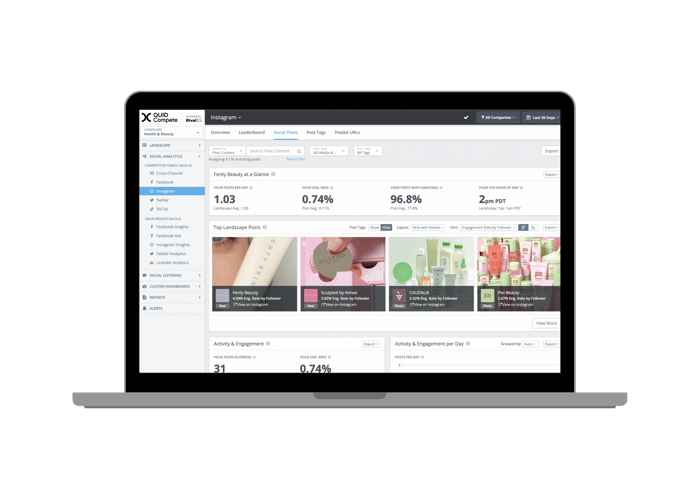
To rise above the competition, you sometimes need a bird’s eye view of your digital world. Quid Compete lets you see vast datasets in a whole new way. A complete 360-degree brand view gives you a context-rich understanding of how your brand measures against not only itself but also your competition.
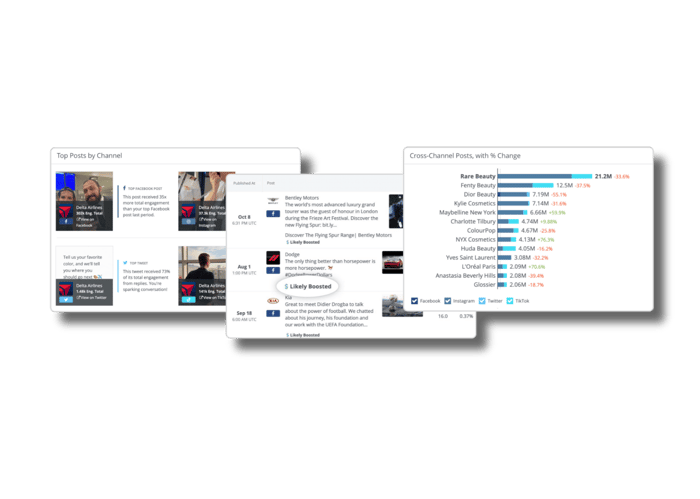
Seeing where you stand can help you see where you need to go. Quid Compete generates custom reports so you can gauge your performance against the past, market leaders, or new competitors. By pinpointing viral elements, you can further analyze key performance metrics and fully optimize brand engagement.
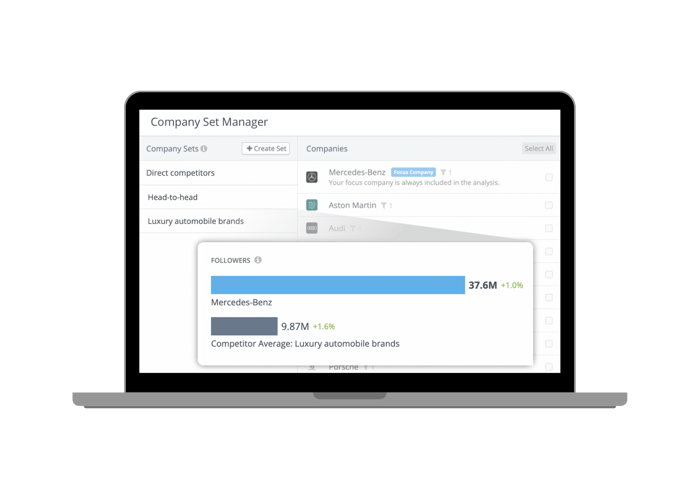
Quid Compete leverages owned social data to provide intelligence at scale. By surfacing emerging themes and using engagement, conversation, and volume metrics, we can compare product categories to help you see market-level trends.
See what your peers have to say. From marketing to customer experience, data science, and consumer insights, see what users across industries have to say about Quid.
Top marks for usability. Setting up topics and sample feeds to get the right data is very easy. I love the dashboard functionality, too, and have used it to build customized reporting for clients. I am a heavy user of the Quid network visualization.
We thoroughly evaluated platforms for measuring and monitoring earned media across social and traditional media channels. Quid checked all the boxes and provided all the core metrics along with a key area that entailed a comparison of brands/products against features and buying criteria.
I love using Quid's ability to easily interpret insights from structured and unstructured datasets and display them in visually effortless formats. This helps us gain competitive intelligence, understand the market landscape, analyze media narratives, and gauge consumer sentiment.
I use Quid like anyone would use Google Search. With Quid, I can quickly ramp up my understanding and knowledge of any topic I'm asked to research by our engineers, designers, and/or business development teams.
Quid provides valuable assistance in regards to monitoring our brand's reputation in real-time, as well as in comparison to our competitors. This allows us to promptly measure the effectiveness of any campaign we launch and make necessary adjustments accordingly.
The visualizations make us look good to clients- especially when they are the kinds of clients who love getting into the nitty-gritty of the data. The data visualizations help our analysts easily digest the data we have. It moves us from search to cleaning to unpacking to insights much more quickly than other tools.
Greg Creed, Former CEO of Taco Bell and Yum! Brands
Using Generative AI, Quid is the only platform that gives a holistic view of your customers’ context. Going beyond just capturing data, we look at data through the lens of the future. Smarter than just listening. More intuitive. More insightful. Turning patterns into predictions and predictions into profits. The tools of yesterday will leave you and your business stuck in the past. Because we know, now more than ever, the only way to get ahead is to look ahead.
Quid Discover helps you uncover insights in a totally new way. Millions of raw data points from different channels are organized, connected, and visualized. Quid Discover allows you to create customer and market context and see what's next while allowing you to deeply understand customer conversations, media trends, corporate innovation, funding and more. Unmet needs are found, trends are uncovered, and strategic decisions are made with unprecedented, efficient clarity.
Visualize connections to understand what’s really going on.
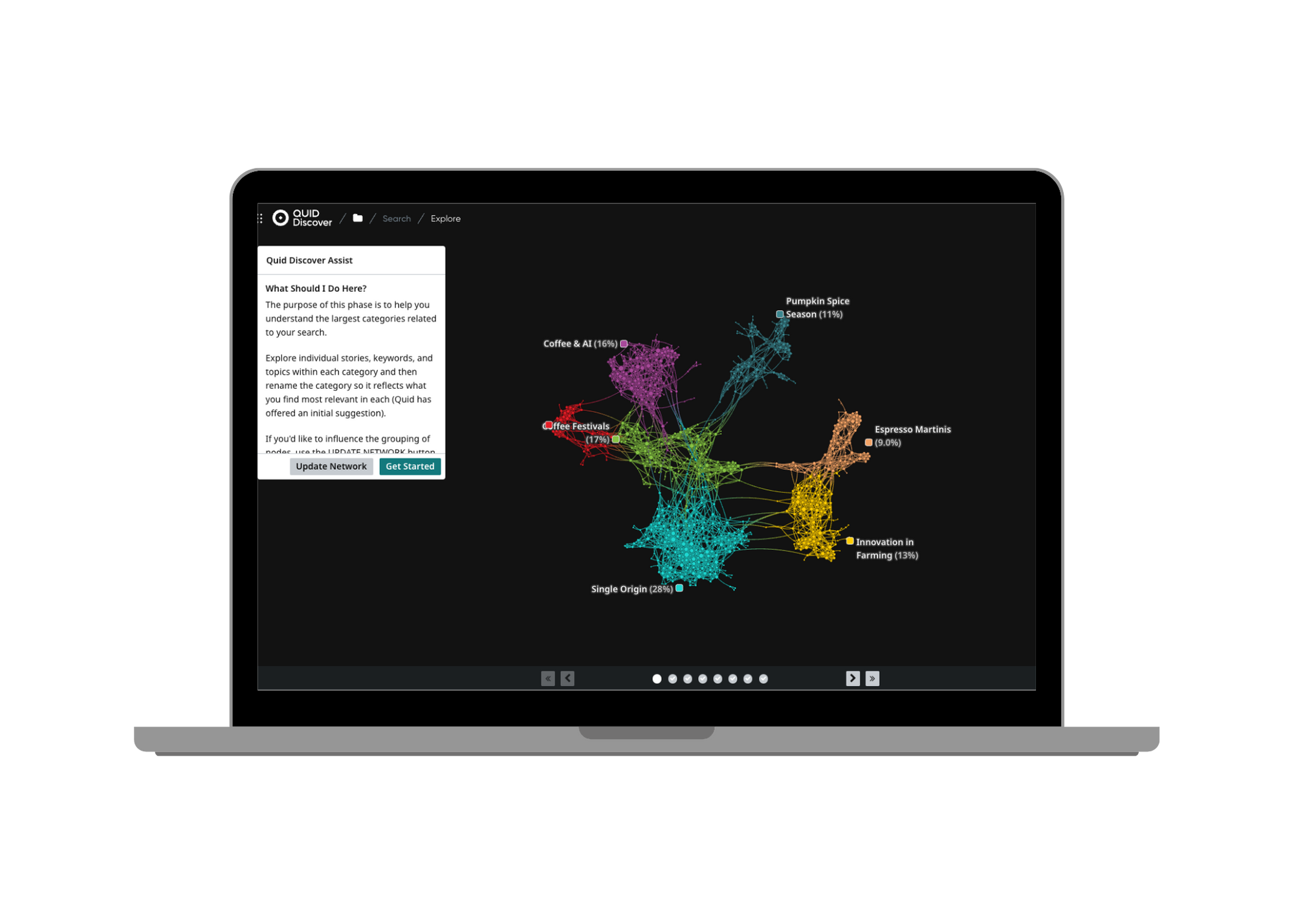
The world doesn’t stop for anyone or any business. As the market-leading social media analytics tool, Quid Monitor seamlessly connects with the most comprehensive set of consumer and market intelligence data sources to take social media analytics to unprecedented heights.
Find and continuously track millions of conversations in real time.
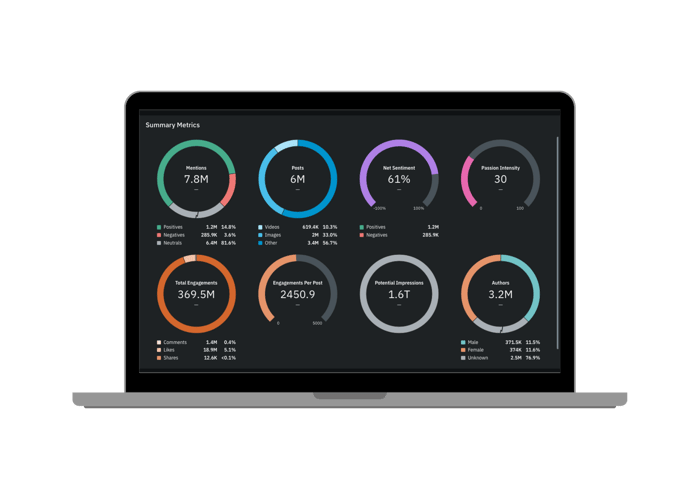
Quid Predict filters out the noise, sifting through millions of weak signals to continuously discover emerging themes or entities across any topic of interest. By uncovering what is important now and predicting future relevance, Quid Predict guides your focus to the most significant trends or opportunities. By consistently seeing around the corner for what’s next, you can better allocate time and resources, supercharging your organization with proactive, data-driven decisions.
Bring your future into focus.
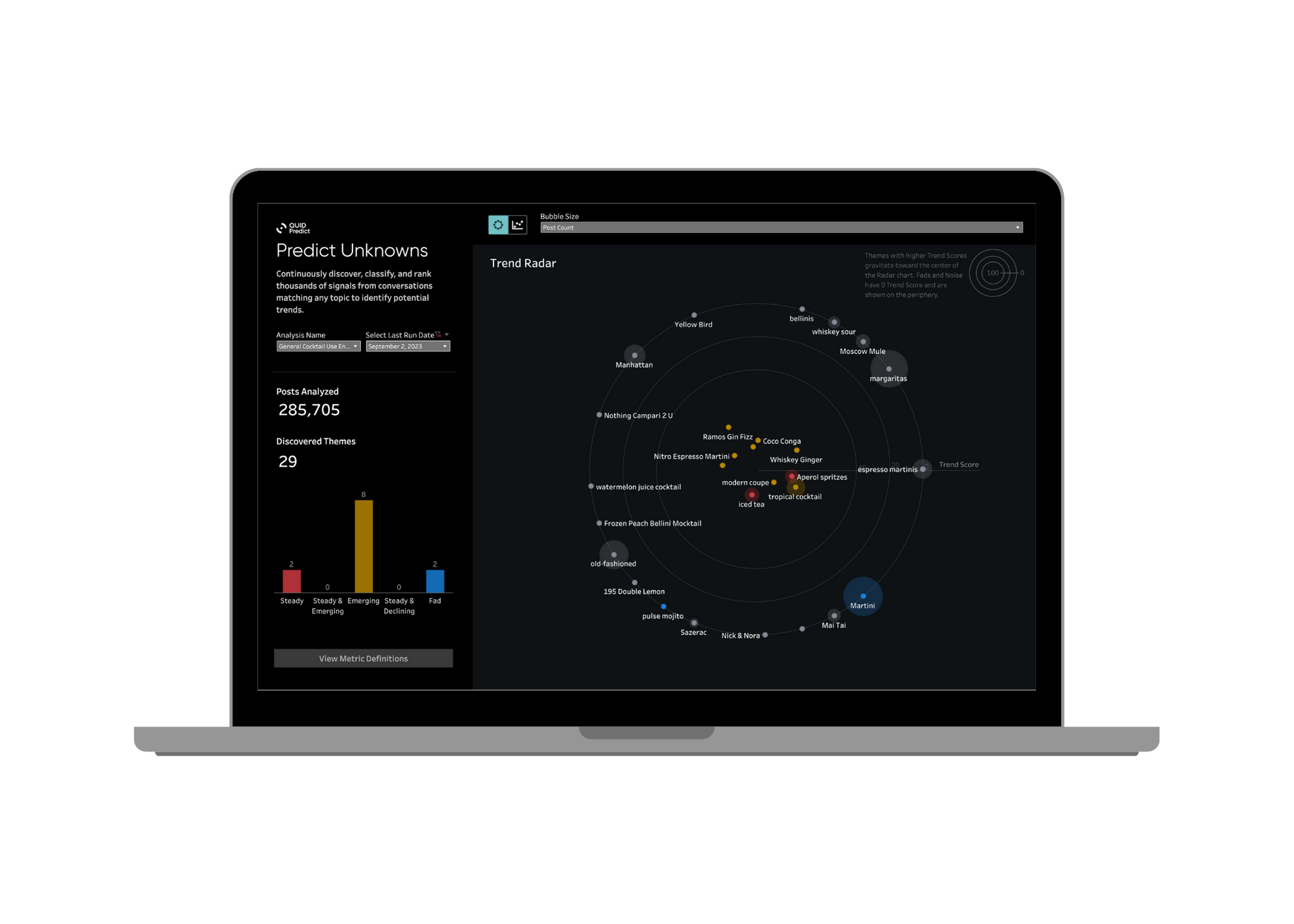
It’s hard to know what success looks like until you can see where you stand. Quid Compete helps you make smarter social media choices by giving you a clear vision of your digital impact. A panoramic view of performance and market position lets you pinpoint what works, optimize results and outperform the competition.
Your compass in the digital world.
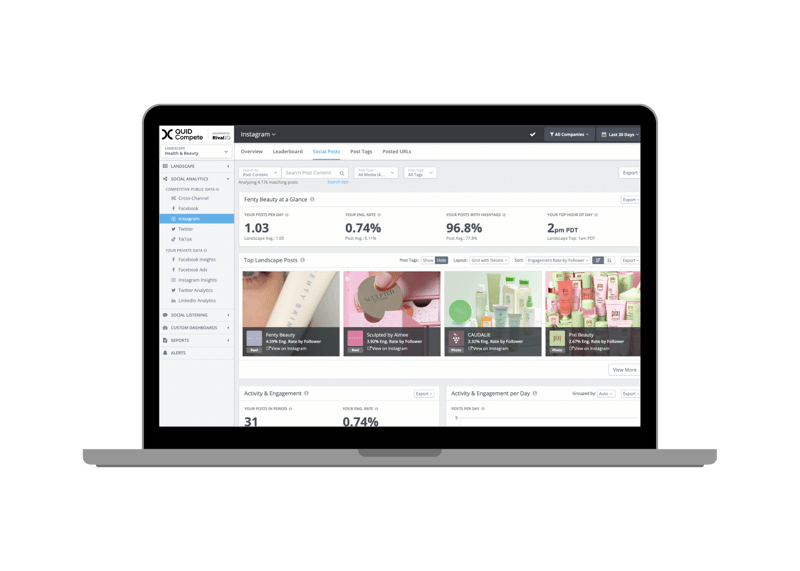
Quid Connect allows you to continuously pass data and metrics out of the Quid environment, expanding the possibilities for how you incorporate Quid insights into your decision making. Real-time integration facilitates fast action on what matters most, including emerging trends, market shifts, or competitive activity. Clear, accurate, and automated insights empower data-driven decisions so you can move in the right direction: forward.
Expand your possibilities.
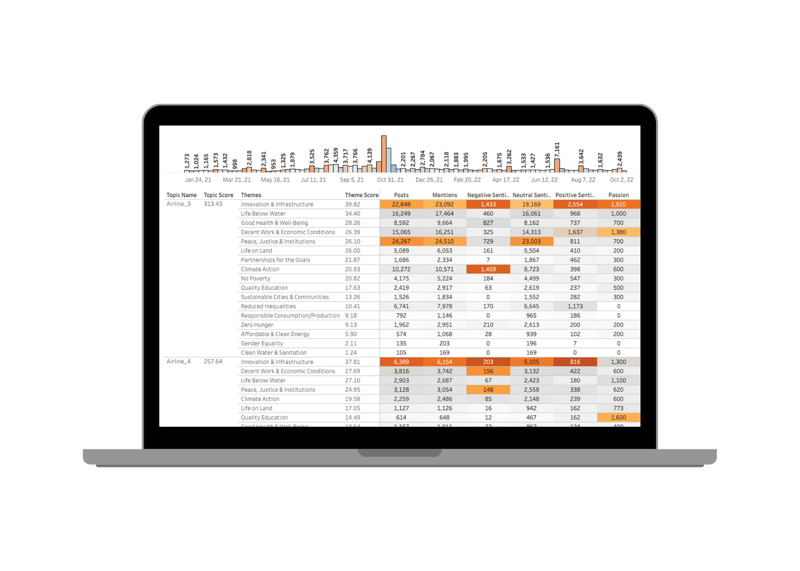
Quid enables you to consolidate customer context efforts across the entire organization..
Your Strategic Advantage in Data-Driven Marketing. The platform for end-to-end marketing insights, predictive trend analysis, and data-backed decision-making.
Helps you fully understand consumer behaviors to innovate in products, services, or marketing. Keep up to speed with your consumers by collecting live, real time data from across the globe.
Get real-time consumer and market data integrated with your business intelligence systems for smarter decision-making.
Unearth your customers' most important needs and expectations to craft a personalized experience that stands out from the crowd.
Illustrate your agency’s expertise by quickly developing data-driven pitches, whether it's demonstrating knowledge of a client’s business, diving deeper into a market and competitive landscape, or developing a unique marketing strategy.
Deep Insights and Real-Time Alerts.
Proactively respond to a crisis by being alerted in real time. You can quickly analyze signals from consumers or the market, and understand the impact so you can always have the right response.